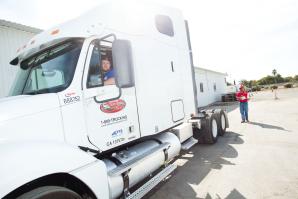Despite changes to the goods-movement industry, many transportation experts believe trucking will always be the nation’s primary mode of freight delivery. Now, transportation officials are looking for new ways to ease traffic congestion and improve the way heavy trucks interact with cars and communities.
Federal lawmakers in 1982 implemented a national network of designated truck routes mandatory for rigs over 53 feet in length. A new proposal would build a four-lane truck corridor in Southern California. A similar expressway is under discussion for the Central Valley.
These new corridors would theoretically ease both traffic congestion and diesel pollution. And, if they required a toll, the revenue could pay for highway infrastructure needs.
While the California Trucking Association vehemently opposes tolling existing roads, they support tolls for new infrastructure. New roads, however, are expensive and often rife with environmental and right-of-way challenges that make them cost prohibitive.
Recommended For You

$30 Million Gamble
Port expansion project has uncertain future
The ports of West Sacramento and Stockton are betting that a $30 million public investment in new infrastructure will convince local importers and exporters to transfer their method of goods movement to the San Francisco Bay from trucking to barge shipping.
The Truck Stops Here
18-wheelers sacked by clean air cops
There is a squad of clean air cops in Sacramento with a
strong-arm approach that squashes the stereotype that
environmentalists are wimps. These officials make up the
enforcement branch of the California Air Resources Board, and
they face off against truckers still fuming over
emission-control rules they fear will put them out of business.


